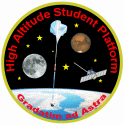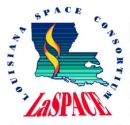



Payload 07 Information
Payload Flight Number:
Institution:
Payload Title:
Detection of ozone and nitrogen oxides in the stratosphere using nanocrystalline sensor arrays on a high altitude balloon flight
Student Leader:
Faculty Advisor:
Payload class:
SMALL
Payload ID Number:
07
Mass:
2kg
Current:
370mA
Serial Downlink:
2400
Analog Downlink:
none
Serial Commands:
none
Discrete Commands:
none
Payload Specification & Integration Plan
Due:
Delivered:
Payload Integration Certification
Scheduled:
Actual:
Flight Operation Plan
Due:
Delivered:
Final Flight / Science Report
Due:
Delivered:
Abstract:
The UND and UNF team had a successful HASP 2008 balloon flight for the measurement of the ozone gas profile in the stratosphere. The nanocrystalline ITO thin film gas sensor array developed by UNF was used for the detection of the ozone gas profile, while the signal conditioning and microcontroller circuits developed by UND team were used in the ozone sensors payload. The profile was nearly matched with the expected theoretical profile, but the maximum magnitude of the measured value of ozone was smaller by a few ppm than that of expected value because of effects from hurricane Ike during the flight period. Based on this fruitful experimental work, UND-UNF team is proposing for a HASP2009 flight for the reconfirmation of sensors data using improved versions of the sensors and payload. Three different types of ozone sensors: nanocrystalline ITO sensors on rigid substrates of glass and ceramic and on flexible substrate of polyimide will be added for the comparison of sensitivity and speed of response of sensors. Recently, the UNF team invented ITO flexible gas sensor arrays, which show better sensitivity than that of sensors on glass and ceramic. In addition, sensors for detection of nitrogen oxides (NOx) in the top of stratosphere will also be added. The stratosphere may heat up by absorbing UV radiation due to the destruction of ozone in the presence of NOx, which could trigger unanticipated climate changes. Sensors for ozone and NOx will operate at room temperature with no need of an external heater, which may diminish power consumption. In addition, higher bit microcontrollers will be used in the payload for the improvement of A/D conversion. The surface topography of sensors before and after flight will be studied using a scanning electron microscope, while chemical composition of the surface of sensors will be investigated by energy dispersive analysis of x-rays. This project continues through the Dakota Space Society student-led consortium.
Science Report:
Monthly Briefings:
|